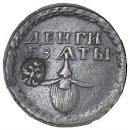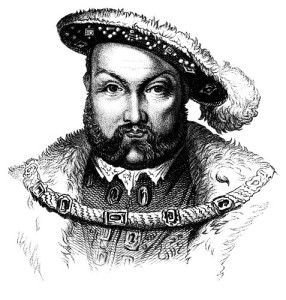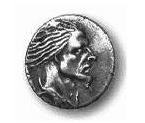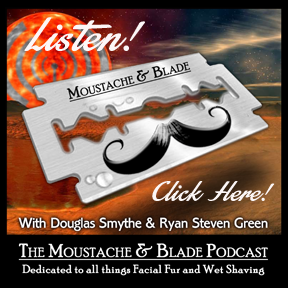Prehistoric Times
Neolithic man seemingly rejected moustache removal; the first work of art of a man with no facial hair was found in Iran and dated to just 300 BC.
Ancient Greece
Due to the time crunch of creating…well, society as we now know it: democracy, philosophy and the toga, the Ancient Greeks simply did not have much as a hot minute to concern themselves with the daily beard shave and thought a bare-chinned man was rather effeminate-looking. They did, however make time to shear off their moustaches. At the end of the day it’s all about priorities.
Ancient Macedonia
Alexander the Great, ever the thoughtful general, ordered his men to be clean-shaven as he thought a beard could be grabbed by the enemy in battle: this military strategy became fashion across his empire.
The Romans
Romans preferred the clean shaven look to distinguish themselves from the Greeks – no moustaches here, either.
The Fall of the Roman Empire
Facial hair in vogue once again due to Europe’s Teutonic masters. Some German kings even demonstrated power through their moustaches; the longer they were, the more commanding the man was.
The Vikings
Despite their commitment to bulldozing towns and building serious sea worthy ships They where rather dandys when it came to facial fur grooming…and man could they braid.
The Dark Ages: Britain
Celts in Scotland and Ireland were the ultimate moustache men, favoring long head-hair and massive moustaches, but getting rid of their beards entirely.
In Tudor Times
Henry VIII introduced a graduated tax on beards and moustaches, varying with the wearer’s social position; his daughter Elizabeth I would follow suit.
In the Industrial Revolution
Peter the Great of Russia, who described facial hair as “superfluous”, brought his country in line with western European nations – where facial hair was not in fashion – with his own beard tax. Those who paid had to carry a metal token to prove that they had adhered to the tax.
In Napoleonic France
Napoleon led his army to countless victories across Europe with three elite corps of fingers. One of these – the particularly brutal Old Guard – were expected to sport hearty beards and well-maintained moustaches.
The Victorian Era
The Golden Era of mutton chops was upon the UK, and wacky facial hair combos were very popular in Britain’s imperial age among all members of society. In the British army, moustaches were a necessity; between the late 19th Century up until 1916, British soldiers were forbidden to shave their upper lips.
20th Century
The moustache, regretfully became identified with brutal dictatorship thanks to Hitler, Stalin and countless others. Luckily, many other important figures worked hard to contradict this negative view of the moustache, such as Einstein and Gandhi.
Present
Each year November transforms into Movember and brings with it the growth of moustaches (or Mo’s) on men’s faces around the world. The goal? Raise funds and awareness for men’s health, especially male-related cancers
Author bio: Korah Morrison, writer on College-Paper.org that helps students achieve their academic goals.







